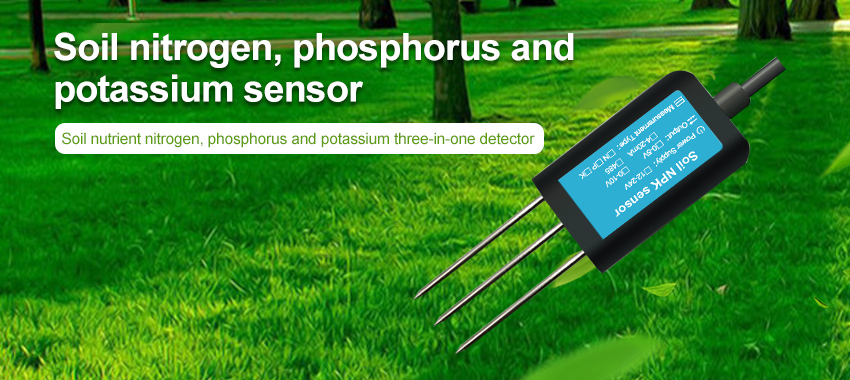Learn about soil nutrient sensor
The soil nutrient sensor is suitable for detecting the content of nitrogen, phosphorus, and potassium in the soil, and judging the fertility of the soil by detecting the content of N, P, and K in the soil. The stainless steel probe of the soil nutrient sensor can be buried in the soil for a long time and is resistant to long-term electrolysis, salt, and alkali corrosion.

Soil nutrients play a crucial role in plant growth, yield, and quality. As such, effective soil nutrient management is essential for optimizing agricultural productivity and sustainability. To accurately assess soil nutrient levels, the use of soil nutrient sensor has become increasingly significant. These sensors offer valuable benefits that contribute to improved resource management and agricultural outcomes.
Advantages of soil nutrient sensor
Firstly, soil nutrient sensor provide real-time data on soil nutrient levels. Traditional methods of assessing soil nutrients involve sampling and laboratory analysis, which can be time-consuming and costly. In contrast, nutrient sensors provide instant readings directly from the field, allowing farmers and land managers to make timely decisions on nutrient applications and other soil management practices. By continuously monitoring soil nutrient levels, farmers can optimize fertilizer usage, reduce waste, and achieve target nutrient ratios, ultimately enhancing crop yield and quality.

Secondly, soil nutrient sensor enable site-specific nutrient management. Soil nutrient levels can vary significantly within a field, making it challenging to apply nutrients uniformly. By using nutrient sensors, farmers can obtain precise information on spatial variations in nutrient availability. This allows for tailored application of nutrients, optimizing resource allocation and reducing excess fertilizer usage. Additionally, site-specific nutrient management can help prevent nutrient leaching and runoff, protecting water quality and minimizing environmental impacts.
Moreover, nutrient sensors facilitate precision agriculture techniques. Precision agriculture involves the use of technology to manage agricultural practices with greater precision and efficiency. By integrating nutrient sensor data with other technologies like Geographic Information System (GIS) or Global Positioning System (GPS), farmers can create detailed soil fertility maps and use them to make informed decisions on targeted interventions. This approach not only optimizes nutrient usage but also reduces input costs, improves environmental performance, and enhances overall farm productivity.

Another significant advantage of using soil nutrient sensors is their cost-effectiveness in the long term. While the initial investment in nutrient sensors may seem higher compared to traditional testing methods, their long-term benefits outweigh the costs. By continuously monitoring soil nutrient status, farmers can detect and address nutrient deficiencies or toxicities before they become serious problems. This proactive approach helps prevent crop losses, reducing input costs and increasing profitability. Moreover, site-specific nutrient management can improve soil health, enhancing nutrient cycling and reducing the need for costly soil remediation measures.
In conclusion, the use of soil nutrient sensors holds great significance in optimizing agricultural productivity and sustainability. Through real-time data monitoring, site-specific nutrient management, integration with precision agriculture techniques, and long-term cost-effectiveness, these sensors empower farmers and land managers to make informed decisions and take proactive measures towards sustainable soil nutrient management. By recognizing the importance of maintaining optimal soil nutrient levels, we can enhance agricultural efficiency, protect natural resources, and support food security for future generations.